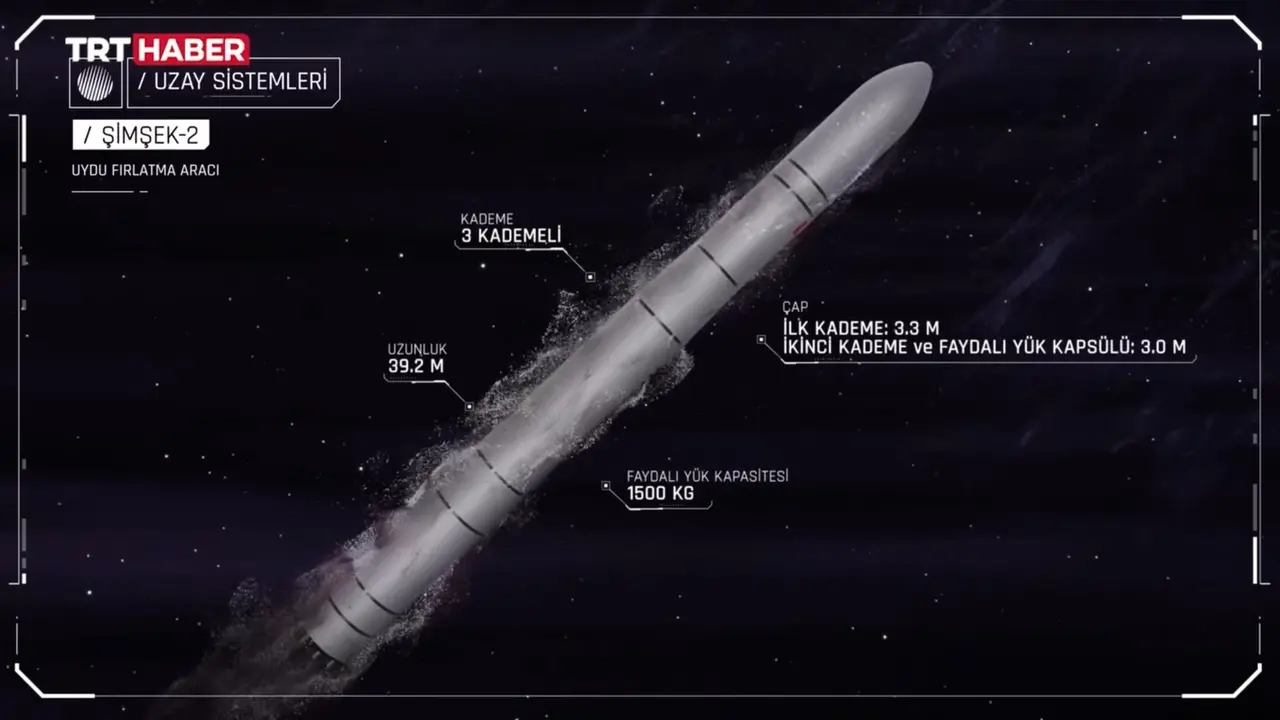ROKETSAN unveiled the Şimşek-2 Satellite Launch Vehicle, one of Turkey’s most comprehensive space technology initiatives, at IDEF 2025. The system, unveiled at the fair hosted by the Ministry of National Defense, attracted attention for both its technical capabilities and its strategic significance.
Şimşek-2 Satellite Launch Vehicle Unveiled
Şimşek-2 is designed to carry a 1,500-kilogram satellite or similarly sized payload to a sun-synchronous orbit above 700 kilometers. The system features a two-stage, liquid-fueled rocket engine. The developed structure, with both precise orbital insertion capability and high payload capacity, takes Turkey’s satellite launch capabilities to a new level.

Roketsan General Manager Murat İkinci stated during the Şimşek-2 launch that this system demonstrates the advanced level of Turkey’s engineering infrastructure. İkinci noted that the previously unveiled Şimşek-1 platform had a payload capacity of only 400 kilograms, emphasizing that Şimşek-2 represents a nearly fourfold improvement in this area.
Satellite launch capabilities are not limited to military applications. Şimşek-2 is designed to be used for both civilian and commercial missions. Within this framework, the system is planned to function not only for domestic satellites but also as a commercial platform capable of serving the international market.
Technical details about the system were also shared during the exhibition. Şimşek-2 has a total length of 39.2 meters. The first stage diameter is 3.3 meters, while this dimension decreases to 3.0 meters in the second stage and the head section. The rocket’s maximum payload capacity is announced as 1,500 kilograms, and its orbital altitude is over 700 kilometers.
Last month, it was announced that the first tests of the Şimşek-1 system would be conducted in 2027. Şimşek-2 is expected to join this testing process after 2027, with launch tests expected to begin no later than 2029.
Şimşek-2, developed by ROKETSAN, is considered a significant step toward Turkey’s goal of achieving autonomous space mobility. With the launch system’s commissioning, Turkey’s capabilities for orbit access, a critical issue as well as satellite production, will be significantly expanded.













